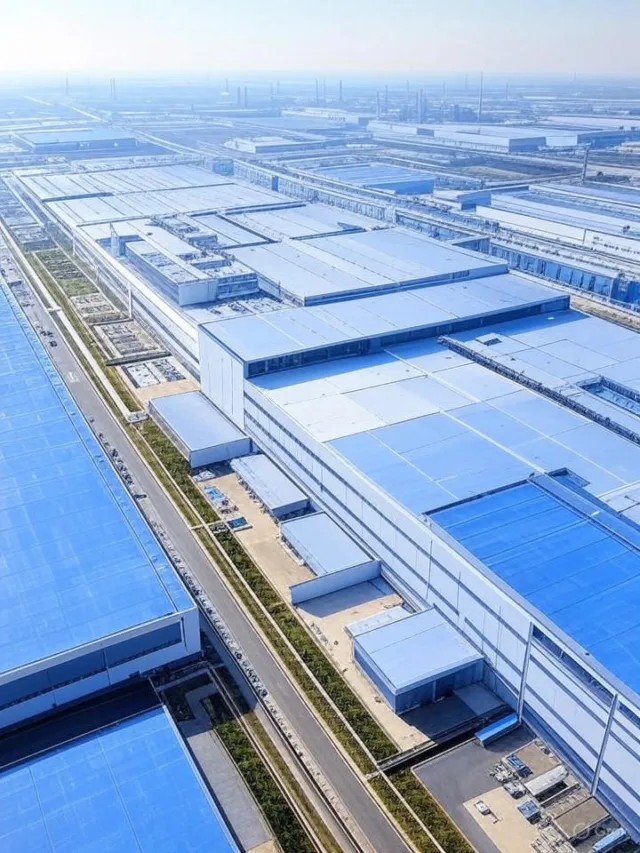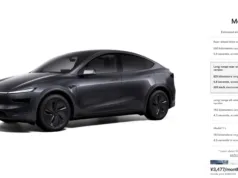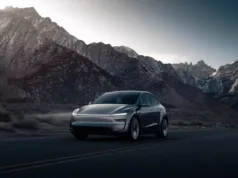
In the heart of Zhengzhou, China, a sprawling industrial behemoth is taking shape, poised to redefine the global electric vehicle landscape. BYD Co., the Chinese automaker that has already dethroned Tesla Inc. as the world’s top EV seller, is expanding its massive factory complex at a breakneck pace. Satellite imagery reveals a facility that dwarfs Tesla’s Gigafactory in Austin, Texas, and recent expansions suggest BYD is gearing up for unprecedented production volumes.
According to Business Insider, the Zhengzhou plant spans over 50 square miles, making it larger than entire cities like San Francisco or Paris. This megafactory isn’t just a production hub; it’s a self-contained ecosystem with housing, schools, and amenities for tens of thousands of workers. The expansion, captured in satellite photos from Planet Labs, shows new construction that could boost output to levels that challenge Tesla’s dominance.
A Factory Larger Than Cities
BYD’s ambitions in Zhengzhou trace back to its strategic push in the EV sector. The company, founded by Wang Chuanfu, has leveraged China’s manufacturing prowess and government support to surge ahead. In 2024, BYD surpassed Tesla in global EV sales, delivering over 1.6 million units in the first nine months alone, as reported by France 24. This milestone exceeded even internal expectations, with BYD’s affordable models like the Seagull undercutting competitors on price.
The megafactory’s scale is staggering. Posts on X (formerly Twitter) describe it as a ‘factory-city’ spanning 130 square kilometers, housing 100,000 employees and their families, complete with residential buildings, schools, and stadiums. One X user noted, ‘The complex will house 100,000 employees and their families, featuring residential buildings, schools, kindergartens, shopping centers and stadiums,’ highlighting the integrated urban planning that supports round-the-clock operations.
Satellite Eyes on Expansion
Satellite images analyzed by BitcoinEthereumNews confirm the facility’s rapid growth. New buildings and infrastructure have emerged over the past year, positioning BYD to potentially overtake Tesla in overall EV production by 2025. The Zhengzhou site already outpaces Tesla’s Austin Gigafactory in size, with the latter covering about 10 million square feet compared to BYD’s expansive footprint.
This expansion comes amid fierce competition in China’s EV market. Business Insider reports that BYD has faced sales and profit drops due to rivals like XPeng and Nio reporting record figures. Yet, BYD’s revised 2025 sales target of 4.6 million vehicles—down from an original 5.5 million—still signals aggressive growth, as noted in an X post by industry analyst Michael Dunne: ‘SAIC, Changan and Geely putting real pressure on BYD in the China market. This pressure has caused BYD to reduce its 2025 sales target by nine hundred thousand vehicles.’
Challenging Tesla’s Throne
Tesla, led by Elon Musk, has been flailing in China, with sales declining for five consecutive months year-on-year, according to Fortune. In contrast, BYD has outsold Tesla in Europe for the first time, with registrations surging in April 2025, as per data from JATO. Analysts at UBS, cited in CnEVPost, state: ‘In China, we see intense competition and Tesla is no longer seen as the technology leader.’
BYD’s edge lies in its vertical integration. The company produces its own batteries, a legacy from its origins as a battery maker, allowing it to control costs and innovate rapidly. The Zhengzhou megafactory’s expansion includes new lines for blade batteries and hybrid systems, enabling BYD to flood the market with affordable plug-in hybrids and pure EVs.
Global Ambitions and Overseas Push
Beyond China, BYD is expanding internationally. It’s building a plant in Brazil and eyeing markets in Europe and Southeast Asia, despite tariffs. BitcoinEthereumNews highlights how this could help BYD surpass Tesla in global output. In Europe, BYD’s surge in registrations reflects its strategy of offering competitively priced vehicles amid rising demand for Chinese EVs.
However, challenges loom. Bloomberg details BYD’s profit declines, with a one-third drop compared to the previous year, attributed to price wars in China. Tesla’s rival in China reported a big profit decline once again, as per Teslarati, underscoring the bumpy ride after years of explosive growth.
Innovation and Workforce Dynamics
At the core of BYD’s megafactory is a workforce ecosystem designed for efficiency. X posts emphasize the plant’s amenities, with one user stating, ‘In addition to production facilities, housing, schools, shopping centers and other amenities will be built there for 100,000 employees.’ This model reduces commute times and boosts productivity, a stark contrast to Tesla’s Austin operations, where worker housing is not integrated on such a scale.
Technologically, BYD is advancing with models like the Qin L and Seal 06, which offer superior range and efficiency. The company’s focus on plug-in hybrids has captured market share in China, where pure EVs face infrastructure hurdles. As Tesla Mag notes, domestic automakers like BYD are transforming the landscape with innovative dynamics.
Market Pressures and Future Projections
Competition is intensifying, with rivals like Geely and Xiaomi eroding BYD’s lead. An X post from Nils Pihl references: ‘The Chinese carmaker outpaced Tesla in global pure electric vehicle sales in 2025. From January to September, BYD sold about 1.61 million units. This is 388,000 more than Tesla’s 1.22 million.’ Yet, BYD’s overseas expansion, including the Brazil plant, aims to mitigate domestic slowdowns.
Tesla is countering with initiatives like a new Model Y launch and Robotaxi pilots, as detailed in an X post by Sawyer Merritt: ‘Tesla in 2025: New Model Y launch, More affordable models launch in first half of this year.’ In China, Tesla is running pilot Robotaxi operations, per Gasgoo Auto News on X, but BYD’s scale could overwhelm these efforts.
Geopolitical and Economic Implications
The megafactory’s growth has broader implications for global trade. Western tariffs on Chinese EVs, as mentioned in JATO’s analysis, haven’t slowed BYD’s European inroads. In the U.S., Tesla benefits from domestic production, but BYD’s cost advantages could pressure prices worldwide.
Industry insiders view this as a pivotal shift. Wang Chuanfu’s vision, as profiled in Business Today, positions BYD’s 50-square-mile empire to ‘crush’ competitors through massive production and affordability. As one X post warns, ‘Chinese car manufacturers will decimate Germany,’ reflecting fears of market disruption.
Sustainability and Supply Chain Mastery
BYD’s integrated supply chain ensures resilience amid global shortages. The megafactory’s expansion includes battery production, reducing reliance on external suppliers. This vertical model, combined with China’s subsidies, has fueled BYD’s rise, though BizToc notes surging competition is hurting even this giant.
Looking ahead, BYD’s trajectory suggests it could exceed 2 million sales in 2025, per projections on X, while Tesla needs a 50% increase to catch up. The Zhengzhou expansion is not just about size—it’s a statement of intent in the EV wars.









